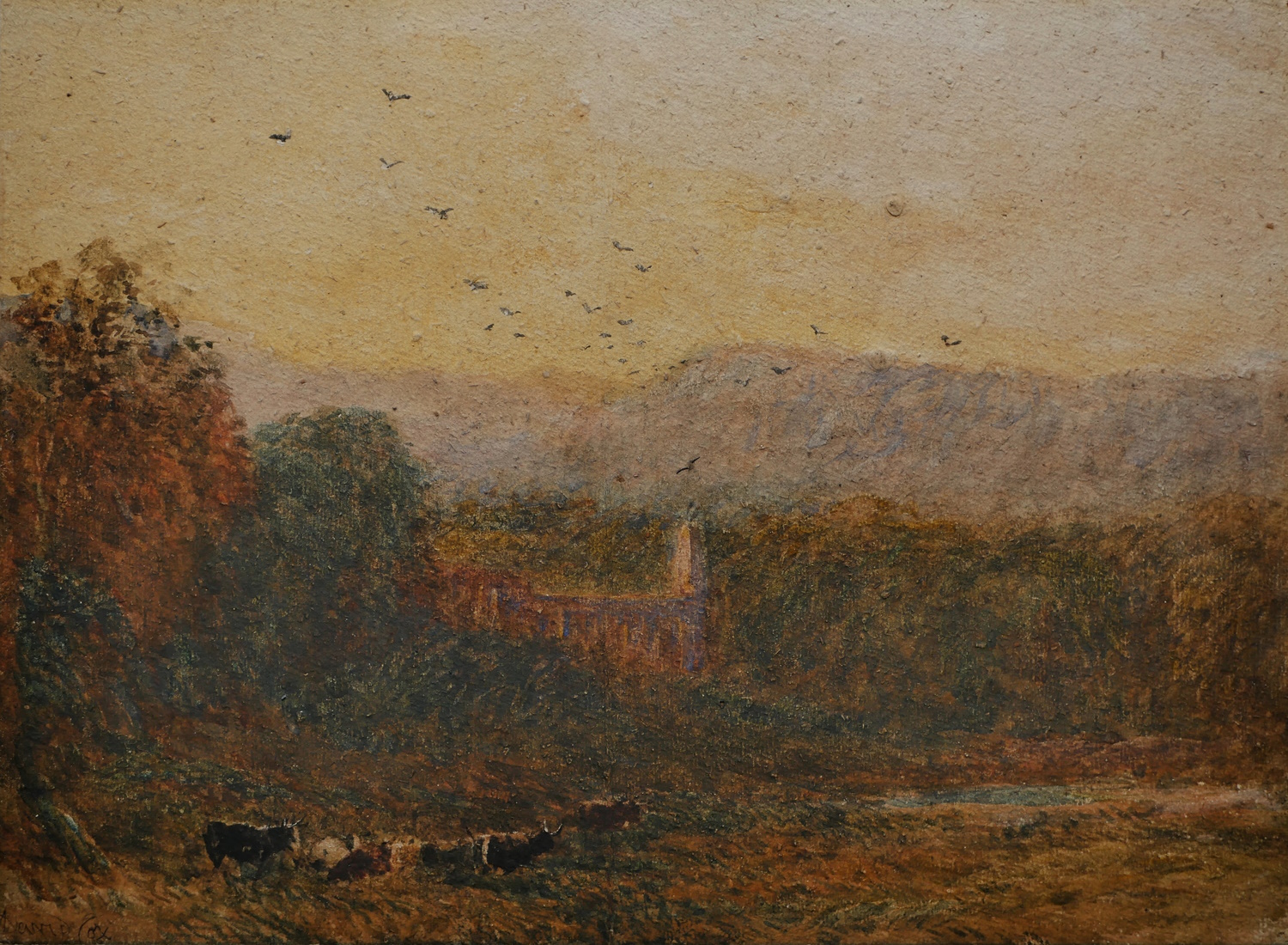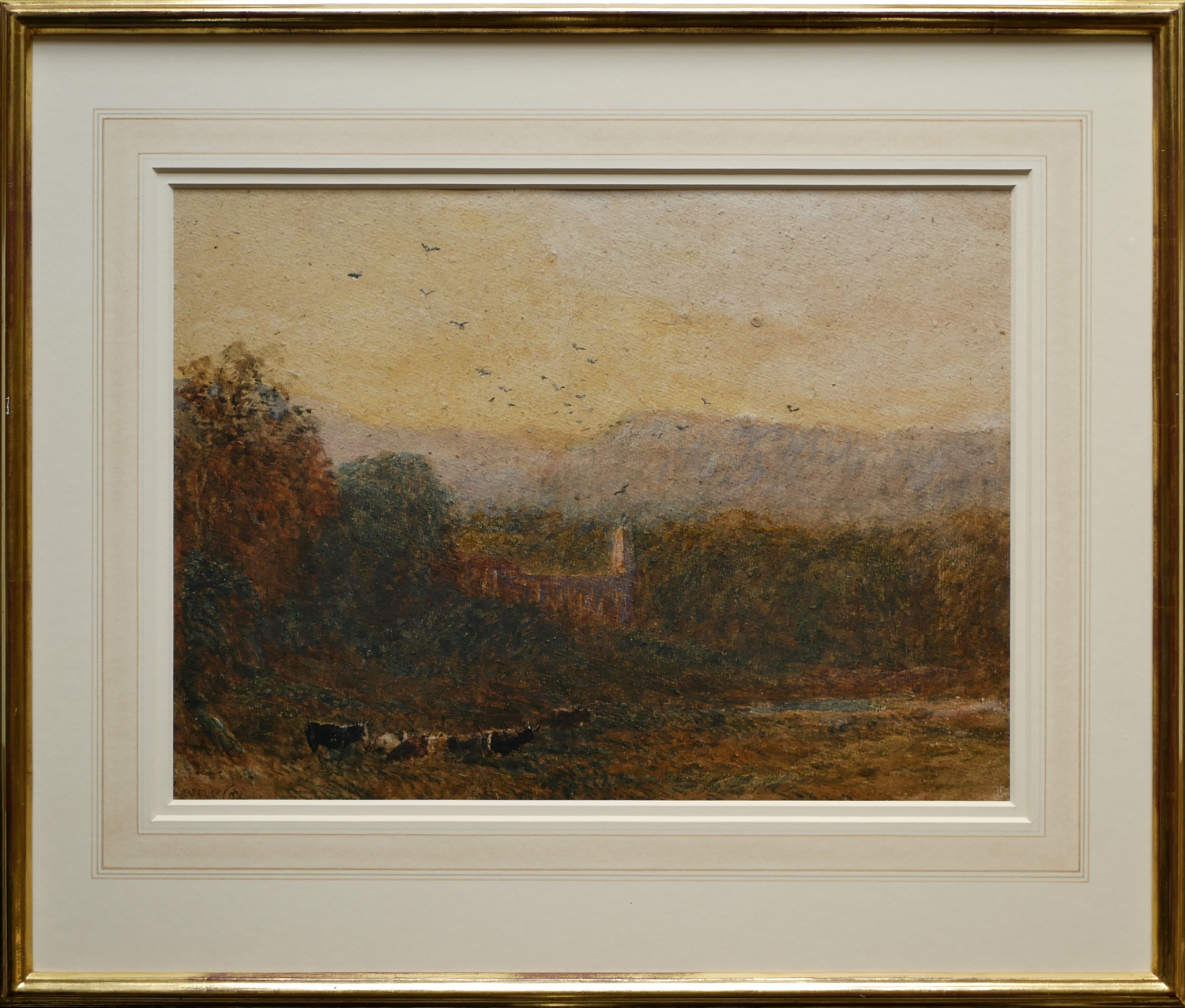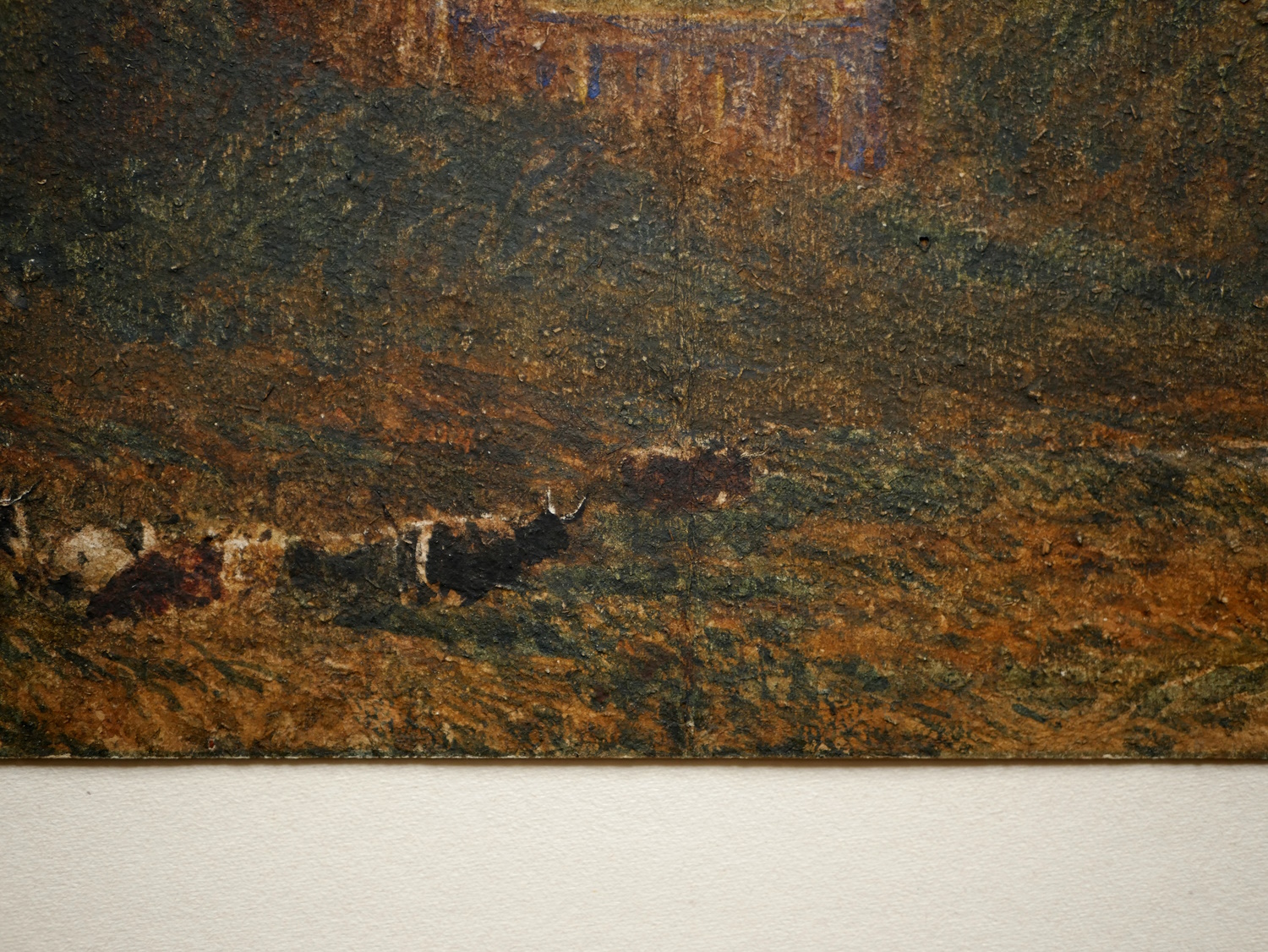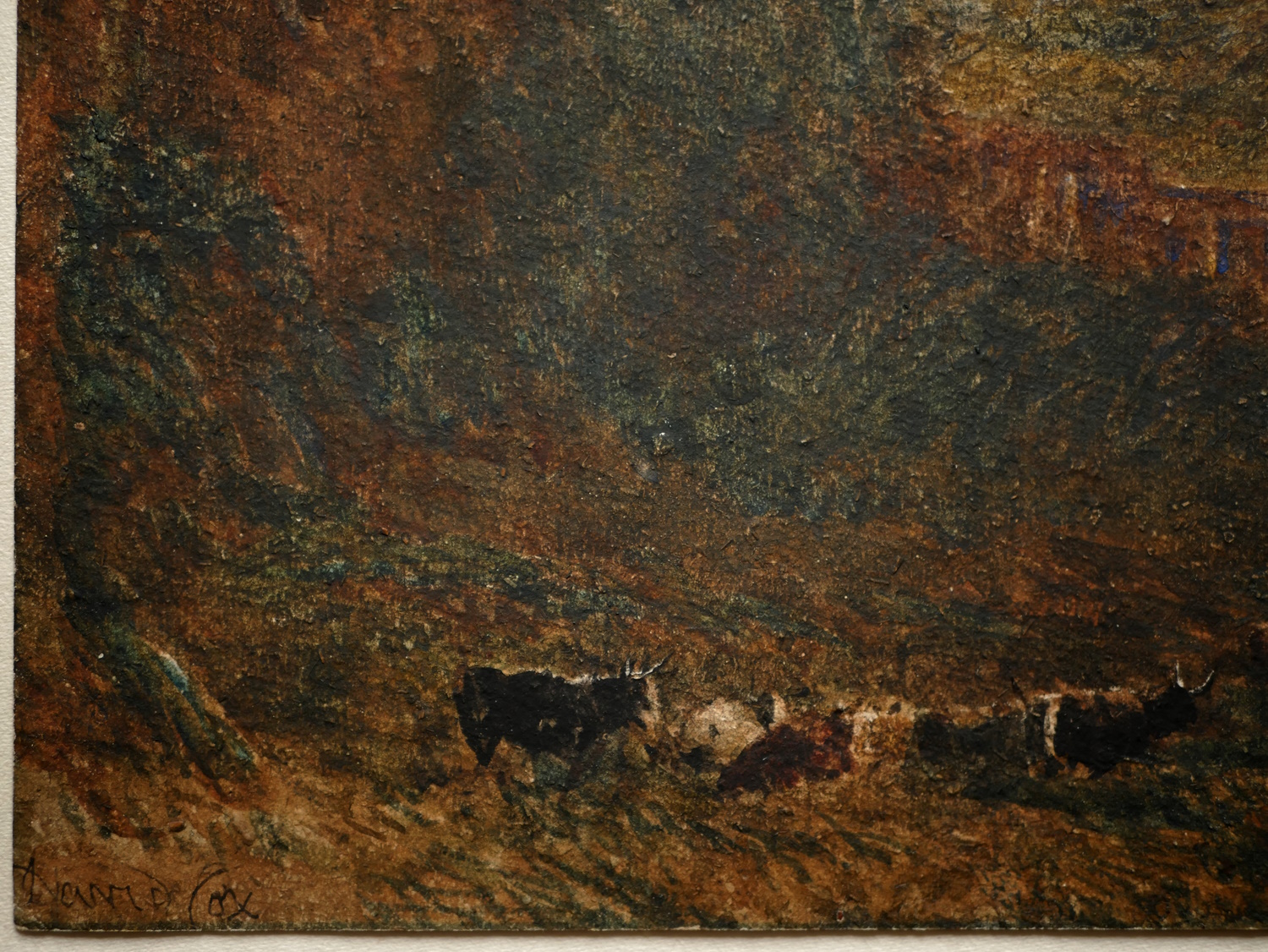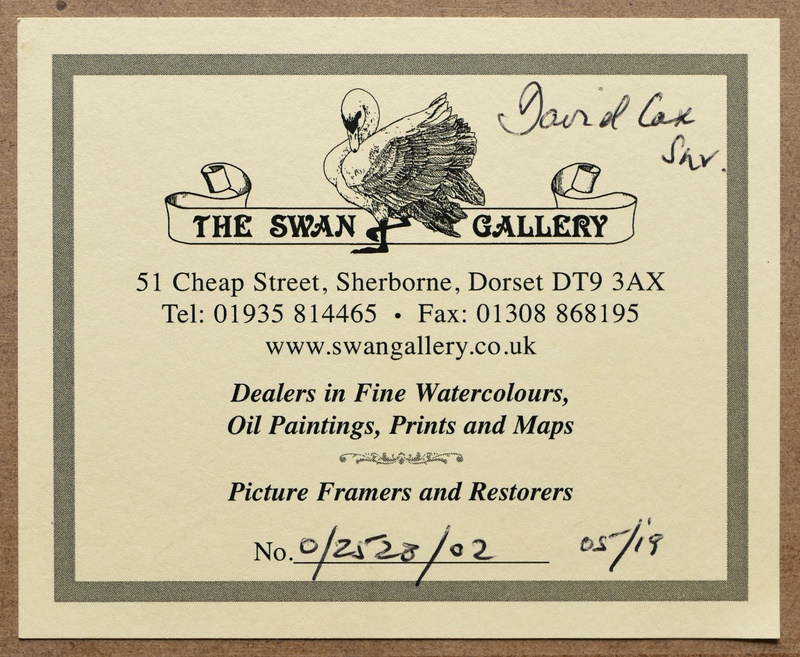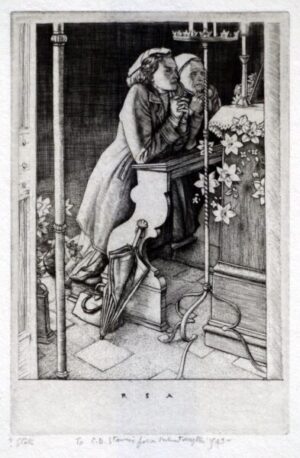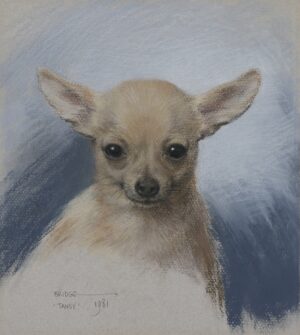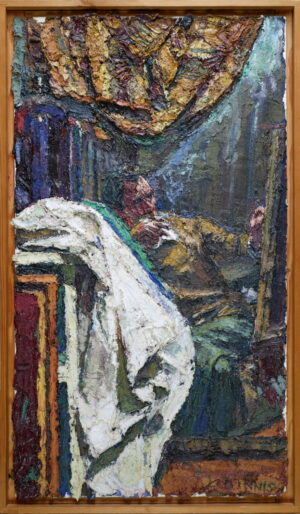Description
This wonderfully atmospheric watercolour was previously thought to depict Tintern Abbey. The flight of birds set against the setting sun and the wandering cattle evoke a mysterious stillness that romanticises the ruined abbey. Bolton Abbey in Wharfedale, North Yorkshire, England, takes its name from the ruins of the 12th-century Augustinian monastery now known as Bolton Priory.
The bold handling of present watercolour is characteristic of the artist’s extraordinarily loose, fluid style which he began to develop in the 1830s. His technique is further emphasised by the rough oatmeal paper that he has used. As Peter Bower noted ‘Cox liked papers that allowed him to work fast with a heavily loaded brush’ (P. Bower, ‘A Remarkable Understanding’, in Sun, Wind, and Rain: The Art of David Cox, 2008-9, p. 96).
In 1836, Cox found a strong wrapping paper, known by Cox as ‘Scotch’ paper. The coarse grain and the high absorbency rate of the paper made it unsuitable for the more usual fine brushwork and even washes employed by many of his contemporaries and appealed to Cox’s desire to experiment with and push watercolour to its full potential. He was so taken with the effects that the paper could produce, that he bought a ream of it, however, Cox didn’t always find the challenge easy and he wrote to his son, ‘My drawing upon Scotch paper is so rough I fear I shall bring down all against me, but the paper had plagued me so that I am very nervous’ (letter to his son, quoted in N. Solly, Memoir of the Life of David Cox, 1873, p. 219).
For a full discussion of Cox’s use of paper see P. Bower, ‘A Remarkable Understanding’, in Sun, Wind, and Rain: The Art of David Cox, exh. cat., Yale Centre for British Art and Birmingham Museums and Art Gallery, 2008-9, pp.97-111.
Brand
Cox, David (1783-1859)
Cox was born at Deritend, near Birmingham, the son of a blacksmith. In around 1798, aged fifteen, he was apprenticed to a miniature painter named Fieldler. Following Fieldler’s suicide, Cox was apprenticed around 1800 as an assistant to a theatre scene-painter named De Maria. In 1804 he took work as a scene-painter with Astley’s Theatre and moved to London. By 1808 he had abandoned scene-painting, taking water-colour lessons with John Varley. In 1805 he made the first of his many trips to Wales, with Charles Barber; his earliest dated watercolours are from this year. Throughout his lifetime he made numerous sketching tours to the home counties, North Wales, Yorkshire, Derbyshire and Devon. Cox exhibited regularly at the Royal Academy from 1805. His pictures never sold for high prices, and he earned his living chiefly as a drawing-master. Through his first pupil, Col. the Hon. H. Windsor (the future Earl of Plymouth), who engaged him in 1808, Cox acquired several other aristocratic pupils.
He wrote several books, including Ackermann’s New Drawing Book (1809); A Series of Progressive Lessons (1811); Treatise on Landscape Painting (1813); and Progressive Lessons on Landscape (1816). The ninth and last edition of his Series of Progressive Lessons was published in 1845. In 1810 he was elected President of the Associated Artists in Water Colour. In 1812, following the demise of the Associated Artists, he was elected an Associate of the Society of Painters in Water Colour (Old Water-Colour Society). He was elected a Member of the Society in 1813, and exhibited there every year except 1815 and 1817, until his death. In about 1814-15 he was appointed drawing-master at the Military Staff College, Farnham. With his appointment as drawing-master at Miss Croucher’s girls’ school, he took up residence in Hereford. He made his first trip to the Continent, to Belgium and Holland, in 1826, and moved to London the following year. He exhibited for the first time with the Birmingham Society of Artists in 1829, and with the Liverpool Academy from 1831. In 1839 two of Cox’s watercolours were bought from the Old Water-Colour Society exhibition by the Marquis of Conynham for Queen Victoria. Around 1840 Cox took up oil painting, studying under W.J. Müller. He exhibited two oil paintings at the Royal Academy in 1844. From 1844 until 1856 he spent summers at Bettws-y-Coed, in North Wales. His health suffered following a stroke in 1853.
In 1855 he was represented by watercolours at the Paris Universal Exhibition. By 1857, however, his eyesight had deteriorated. An exhibition of his work was arranged in 1858 by the Conversazione Society, Hampstead, and in 1859 a retrospective exhibition was held at the German Gallery, Bond Street, London. Cox died several months later. He was buried in Harborne, near Birmingham, where he had retired in 1841.
